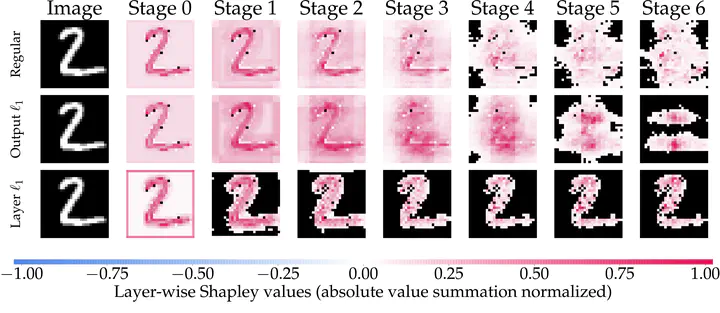 Progression of Shapley representation
Progression of Shapley representationAbstract
Shapley values have become one of the most popular feature attribution explanation methods. However, most prior work has focused on post-hoc Shapley explanations, which can be computationally demanding due to its exponential time complexity and preclude model regularization based on Shapley explanations during training. Thus, we propose to incorporate Shapley values themselves as latent representations in deep models thereby making Shapley explanations first-class citizens in the modeling paradigm. This intrinsic explanation approach enables layer-wise explanations, explanation regularization of the model during training, and fast explanation computation at test time. We define the Shapley transform that transforms the input into a Shapley representation given a specific function. We operationalize the Shapley transform as a neural network module and construct both shallow and deep networks, called ShapNets, by composing Shapley modules. We prove that our Shallow ShapNets compute the exact Shapley values and our Deep ShapNets maintain the missingness and accuracy properties of Shapley values. We demonstrate on synthetic and real-world datasets that our ShapNets enable layer-wise Shapley explanations, novel Shapley regularizations during training, and fast computation while maintaining reasonable performance. Code is available at https://github.com/inouye-lab/ShapleyExplanationNetworks.